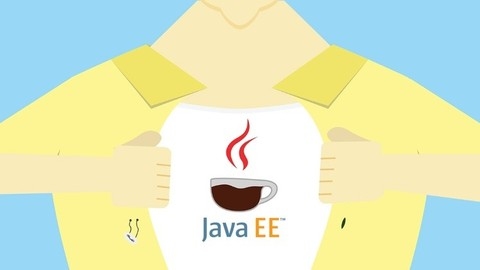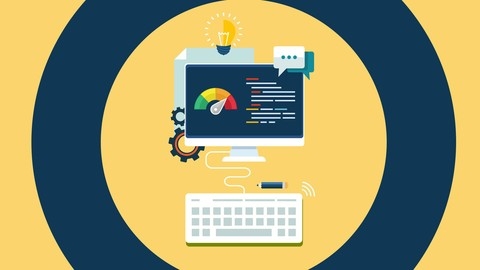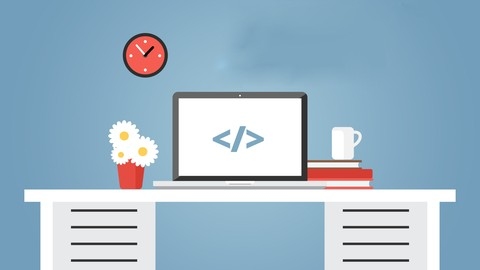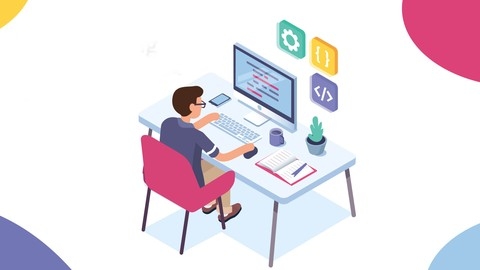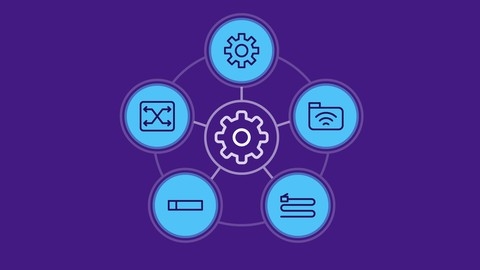Java EE (Enterprise Edition) is a powerful platform for building robust, scalable, and secure enterprise applications.
It provides a comprehensive set of APIs and services that simplify development tasks such as database access, web services, messaging, and security.
By learning Java EE, you can gain the skills needed to develop complex, high-performance applications for a variety of industries, from finance and healthcare to e-commerce and government.
Finding a good Java EE course on Udemy, however, can be challenging.
With so many options available, it’s easy to get lost in the sea of courses and struggle to find one that suits your learning style, experience level, and career goals.
You want a course that covers the essential concepts, provides hands-on practice, and is taught by an experienced instructor who can guide you through the intricacies of the platform.
Based on our research and analysis, we believe that Introduction to Java EE is the best Java EE course on Udemy overall.
This course offers a comprehensive and practical introduction to Java EE, covering everything from the basics to advanced topics such as microservices and cloud deployment.
It features clear explanations, engaging examples, and hands-on exercises that help you solidify your understanding.
While Introduction to Java EE is our top pick, there are other excellent Java EE courses available on Udemy that might be a better fit for your specific needs.
In this article, we’ll explore some of the best Java EE courses on Udemy, catering to different learning styles and skill levels.
So, whether you’re a beginner just starting out or an experienced developer looking to expand your knowledge, keep reading to discover the perfect Java EE course for your journey.
Introduction to Java EE
This course provides a solid foundation in Java EE, walking you through everything from the basics to practical application deployment.
You will start by understanding what Java EE is and how it differs from Java SE.
You’ll then dive into the core concepts of the Java EE programming model, gaining a deep understanding of how to develop robust enterprise applications.
The course thoroughly explains the Java EE architecture, showing you how its services work together.
You’ll explore essential Java EE technologies like Servlets, JSPs, and EJBs and learn how they contribute to building dynamic web applications.
You will also learn how to package and deploy these applications using various methods, including local servers, cloud platforms, and containers.
The course also touches on the crucial aspects of choosing Java EE for your project.
You will analyze the business and technical considerations, weighing in on the IT challenges involved.
You’ll even get a taste of microservices, a modern approach to application development, and understand how they fit into the Java EE landscape.
Java EE with Vaadin, JPA, Microservices, Spring and Maven
You’ll begin by setting up your development environment with Java, Eclipse, Maven, and MySQL.
You’ll learn how to efficiently manage your projects with Maven, a tool that streamlines the build process.
The course then dives into JPA, a powerful tool for interacting with databases.
You’ll become proficient in object-relational mapping (ORM) and discover how to use annotations to connect your Java objects to database tables.
You’ll become skilled in performing basic CRUD operations (create, read, update, delete) and writing queries using JPQL.
The journey continues with the Spring Framework, a widely used platform for building Java applications.
You’ll explore essential Spring concepts, like dependency injection and annotations.
You’ll also get hands-on experience with Spring Boot, a tool designed for rapid application development.
You’ll then learn Vaadin Framework, known for creating visually appealing and user-friendly web interfaces, and how to integrate it seamlessly with Spring Boot.
The course culminates with a deep dive into microservices, a modern architectural approach to building applications.
You’ll understand how to design, implement, and deploy microservices using RESTful APIs and tools like Jackson (for handling JSON) and Spring Security (for securing your applications).
You’ll gain practical experience building a car rental service, solidifying your understanding of transactions, API gateways, and robust application development with Spring Security.
The Java EE Course - build a Java EE app from scratch
This Java EE course guides you from setting up your development environment to building a complete web application.
You begin by installing essential tools like Java, Glassfish, and Eclipse, configuring them to work together.
Then, you dive into Servlets and JSPs, the backbone of web development with Java.
You will build interactive web pages for a flight booking application, learning to handle user input, validate forms, and manage form submissions.
You then explore Enterprise Java Beans (EJBs) - reusable components that increase code efficiency.
You learn about Stateless and Stateful Session Beans, Singleton Beans, and how to use JNDI to access these EJBs.
You delve into the Java Persistence API (JPA), learning to connect to a database (in this case, Derby/JavaDB), create a DataSource, and use Eclipse to manage the connection.
The course covers creating JPA Entity classes for passengers, flights, and airplanes, and you’ll discover how to persist data in one-to-one, one-to-many, and many-to-many relationships.
The course then introduces you to RESTful web services using JAX-RS.
You’ll build REST endpoints that expose your application data in both JSON and XML formats, enabling communication with various platforms.
You learn to handle REST requests like retrieving data, adding new passengers, updating information, deleting flights, and managing exceptions.
Finally, you encounter Maven, a powerful tool for managing and building Java projects.
You’ll become familiar with Maven’s goals, phases, and lifecycles and learn to use it for dependency management.
You will ultimately migrate your flight booking application to a Maven web application and then to a more complex multimodule Maven application, gaining valuable experience with this industry-standard tool.
Java Web Development / JEE / Jakarta EE (Servlet, JSP, MVC)
This Java EE course teaches you how to build web applications using Java technologies.
You’ll begin by setting up your development environment with JDK and STS IDE.
Then, you’ll dive into Java EE architecture, learning about the web container, the HTTP protocol, and the life cycle of servlets—the heart of Java web development.
You’ll work with different web scopes (application, session, and request) and use objects like ServletContext and HttpSession.
Plus, you’ll explore error handling, request forwarding, response redirection, and servlet filters and listeners.
Next, you’ll move on to JSP, learning how to use JSP elements, scriptlets, and directives to create interactive web pages.
You’ll discover JSP actions, including those for including and forwarding, working with JavaBeans, and utilizing JSTL for tasks like internationalization and formatting.
You’ll become comfortable with key servlet methods like doGet and doPost, gaining practical experience with these fundamental building blocks.
Finally, you’ll learn about the MVC design pattern for building well-structured web applications.
You’ll create a complete employee management application using Java EE, building the model, controller, and view layers.
You’ll work with a MySQL database for data persistence and choose from front-end technologies like CSS Bootstrap, Angular JS, or JQuery for the view layer.
Java EE 7 A Practical Training Course From Infinite Skills
This Java EE 7 course equips you with the skills to build robust and dynamic web applications.
You begin by understanding Java EE’s role in web development and then dive into setting up your development environment.
This includes installing and configuring essential tools like Apache Tomcat, Eclipse, and MySQL.
You then explore the core of Java EE, mastering servlets and JavaServer Pages (JSPs) to build dynamic web pages and handle user interactions.
You discover how to manage user data, work with databases, and ensure the security of web applications using techniques like SSL.
The course doesn’t just stop at the basics; it teaches you to use JSTL to write cleaner and more efficient JSP code.
You move beyond basic web development, learning to build custom tag libraries for reusable components.
The course introduces you to advanced concepts such as filters and wrappers, which give you more control over your web applications.
You also explore web frameworks like Struts2, a popular choice for building enterprise-level Java EE applications.
Java: Enterprise App Development with Java EE 8: 2-in-1
This course thoroughly explores Java EE 8 and empowers you to build robust enterprise applications.
You delve into core concepts such as EJBs, CDI managed beans, producers, qualifiers, and scopes, laying a strong foundation for application development.
You master JAX-RS to build RESTful web services, using JSON-B and JSON-P for seamless data handling.
You learn to craft custom HTTP responses and implement robust exception handling techniques.
The course delves into data persistence with JPA, teaching you to map entities, manage relationships, and work with transactions.
You explore advanced concepts like interceptors, configuration, and caching to optimize your application’s performance.
You’ll dive into asynchronous processing with EJBs, CDI events, and managed threads to build responsive applications.
The course introduces you to Server-Sent Events (SSE) and WebSockets, enabling real-time communication features.
You learn to build SSE resources and clients, as well as develop WebSocket endpoints for bi-directional communication.
You will gain hands-on experience with essential tools and technologies like Docker for containerization, JSON Web Tokens (JWT) for authentication, and frameworks like OpenTracing and Jaeger for logging, metrics, and tracing.
Through practical examples and clear explanations, you acquire the skills to build secure, scalable, and observable enterprise applications with Java EE 8.
Java EE, Web Development: HTTP, Server,Servlet,HTML/CSS,JSP
This Java EE course guides you through web development, starting with the basics and advancing to sophisticated concepts.
You’ll begin with the foundations of the web, exploring how data travels through the internet using protocols like HTTP and TCP/IP.
You’ll then learn about client-server architecture, the backbone of how websites function.
The course introduces you to Apache Tomcat, a widely used web server, and teaches you how to set it up.
You’ll delve into Servlets, essential components of Java web applications, mastering the Servlet API and deployment descriptors.
You’ll create dynamic and interactive web pages by harnessing the power of HTML, CSS, and JSP.
The course emphasizes practical application through hands-on projects and real-world examples, solidifying your understanding of these technologies.
You’ll gain valuable experience with Maven, a robust build tool for managing Java projects.
The curriculum also covers essential design patterns like MVC (Model-View-Controller) and layered architecture to build robust and maintainable applications.
As you progress, you’ll dive into database interaction using ORM (Object-Relational Mapping), JPA (Java Persistence API), and Hibernate, understanding how to efficiently manage data in your applications.
Microservice Development with Java EE 8: 2-in-1
This course equips you with the skills to build modern, scalable applications using Java EE 8 microservices.
You begin by grasping the fundamentals of microservice architecture, including the advantages and strategies for transitioning from monolithic applications.
The course then guides you through hands-on experience, building microservices with frameworks like Payara Micro, Dropwizard, and Spring Boot.
You delve into Java EE technologies like JAX-RS and CDI to create RESTful APIs, forming the backbone of your microservices.
You learn how to secure, test, and deploy your microservices using industry-standard tools such as Docker, Jenkins, AWS ECS, and Microsoft ACI.
You’ll discover how to leverage OpenID Connect for robust security and Spring Boot with JAX-RS for comprehensive testing.
You explore essential aspects like monitoring and logging, crucial for managing applications in real-world scenarios.
The course teaches you how to use JMeter for performance testing and implement logging mechanisms to track errors and optimize performance.
You gain proficiency in containerizing your applications with Docker, making them easily portable and scalable.
